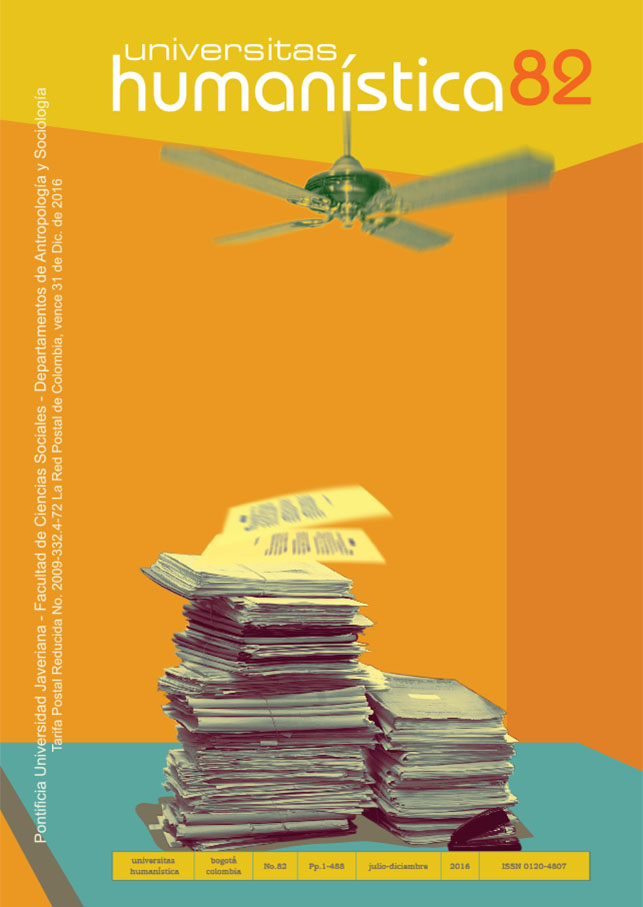Resumen
El artículo busca hacer una reflexión acerca de la burocracia judicial pero desde una mirada centrada en la interacción entre las personas y las cosas. En otras palabras, se desea aportar en la comprensión de la configuración del Estado desde los múltiples vínculos entre objetos (los expedientes) y la gente (funcionarios y ciudadanos). Para ello el artículo está dividido en tres partes. En la primera, se hace un balance bibliográfico de la forma como se han investigado los juzgados y los expedientes dentro y fuera del país. Seguidamente, se iniciará con la descripción etnográfica del despacho, explicando los cargos y funciones de los empleados, el ciclo que cumplen los expedientes, las etapas por las que atraviesan los documentos y la experiencia personal de la etnógrafa como auxiliar del juzgado y encargada de hacer circular los papeles dentro y fuera del juzgado. Finalmente se hace una reflexión teórica acerca de la materialidad de la justicia a partir de los datos etnográficos.

La revista Universitas Humanística se encuentra registrada bajo la licencia Creative Commons Reconocimiento 4.0 Internacional. Por lo tanto, esta obra se puede reproducir, distribuir y comunicar públicamente en formato digital, siempre que se reconozca el nombre de los autores y a la Pontificia Universidad Javeriana. Se permite citar, adaptar, transformar, autoarchivar, republicar y crear a partir del material, para cualquier finalidad (incluso comercial), siempre que se reconozca adecuadamente la autoría, se proporcione un enlace a la obra original y se indique si se han realizado cambios. La Pontificia Universidad Javeriana no retiene los derechos sobre las obras publicadas y los contenidos son responsabilidad exclusiva de los autores, quienes conservan sus derechos morales, intelectuales, de privacidad y publicidad.
El aval sobre la intervención de la obra (revisión, corrección de estilo, traducción, diagramación) y su posterior divulgación se otorga mediante una licencia de uso y no a través de una cesión de derechos, lo que representa que la revista y la Pontificia Universidad Javeriana se eximen de cualquier responsabilidad que se pueda derivar de una mala práctica ética por parte de los autores. En consecuencia de la protección brindada por la licencia de uso, la revista no se encuentra en la obligación de publicar retractaciones o modificar la información ya publicada, a no ser que la errata surja del proceso de gestión editorial. La publicación de contenidos en esta revista no representa regalías para los contribuyentes.


